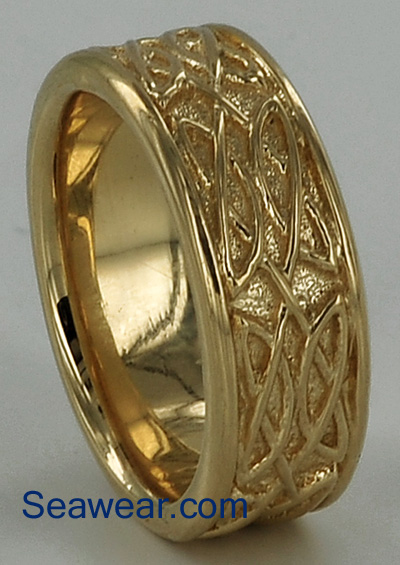The making of your Celtic wedding band
It starts out with 'shooting' a wax of the ring to size from the rubber mold.

Refined casting grain is ordered and alloyed to the perfect karat

These three Celtic wedding bands have just been cast and ultrasonic cleaned. You can see some of the white investment still stuck within the crevices. These had an extra feed sprue and reservoir to pull from in the center of the ring as I wanted to be sure all the details filled. Note how the finish appears to be a satin effect.

These have been cleaned with a high speed wet centrifugal tumbler with stainless steel media pins. Every bit is bombarded with tiny pin ends to clean, work harden and test for any imperfections. The satin scale has been removed and the beginnings of a polish can be seen.

These are ready to be cut off the tree, feed sprues removed and joiner marks filed smooth.

Here we have completed four hours of wet centrufual tumbling in ceramic media. This burnishes metal into shape rather than simply removing it. Removing it would be quicker but result in loss of metal. We try to keep as much metal on the ring as possible.

Then four hours of wet centrifugal tumbling in porcelain media. This further moves the metal and work hardens it. Any casting flaws or weak areas would show up or break.

Then 36-48 hours of dry rotary tumbling in coarse walnut shell. A shine is beginning to form, the lines inside the ring are barely visible.

48 hours of dry rotary tumbling in fine walnut shell. We have removed very little metal, just moved it around. Now, we are ready for hand polishing! One more day and it ships out!
You can go back to Celtic wedding rings
